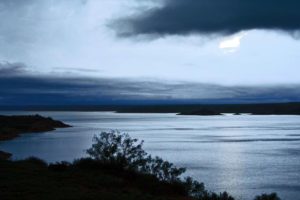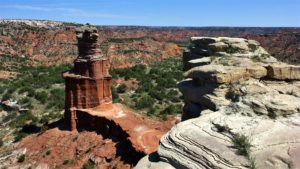The Texas Panhandle’s two significant federal park attractions aren’t likely to attract the attention garnered by actual national parks.
But as the National Park Service marks its 100th birthday, I thought it would be good to hold up the Panhandle’s parks for your attention.
Lake Meredith National Recreation Area, all 44,000 acres of it, is going through some serious change. The park is being improved, developed and made more attractive to visitors coming to the region.
Do you remember the drought that ravaged the area in 2011-12? Sure you do. Lake Meredith park officials began repurposing some of its features to become a more land-based attraction. The lake itself was diminishing rapidly, falling to a low of 26 feet.
Then something quite unexpected happened in the spring and summer of 2015. The rain started to fall. It kept falling upriver. The Canadian River poured into the lake. The level rose to more than 60 feet. Boaters returned to the lake.
The lake — in this centennial year of the National Park Service — is in far better shape than it was just two years ago.
The Lake Meredith NRA is enjoying a return of visitors. People are enjoying the water, along with the hiking trails and the campgrounds being developed throughout the area.
We have a national monument, too. Alibates Flint Quarries isn’t far from Lake Meredith. It features exhibits where the park rangers show tourists how Native Americans dug out stones to use for tools and weapons. That park, too, is being improved for better use by those coming to the region to understand its history.
Texas does not set aside much of its land for public use. Statewide, the percentage of public land remains minuscule. In the Panhandle, we place great emphasis on private land ownership.
But these two federal sites are worth saluting as the nation marks the centennial year of the National Park Service.
We also ought to thank the Almighty for restoring that big lake’s water level.

